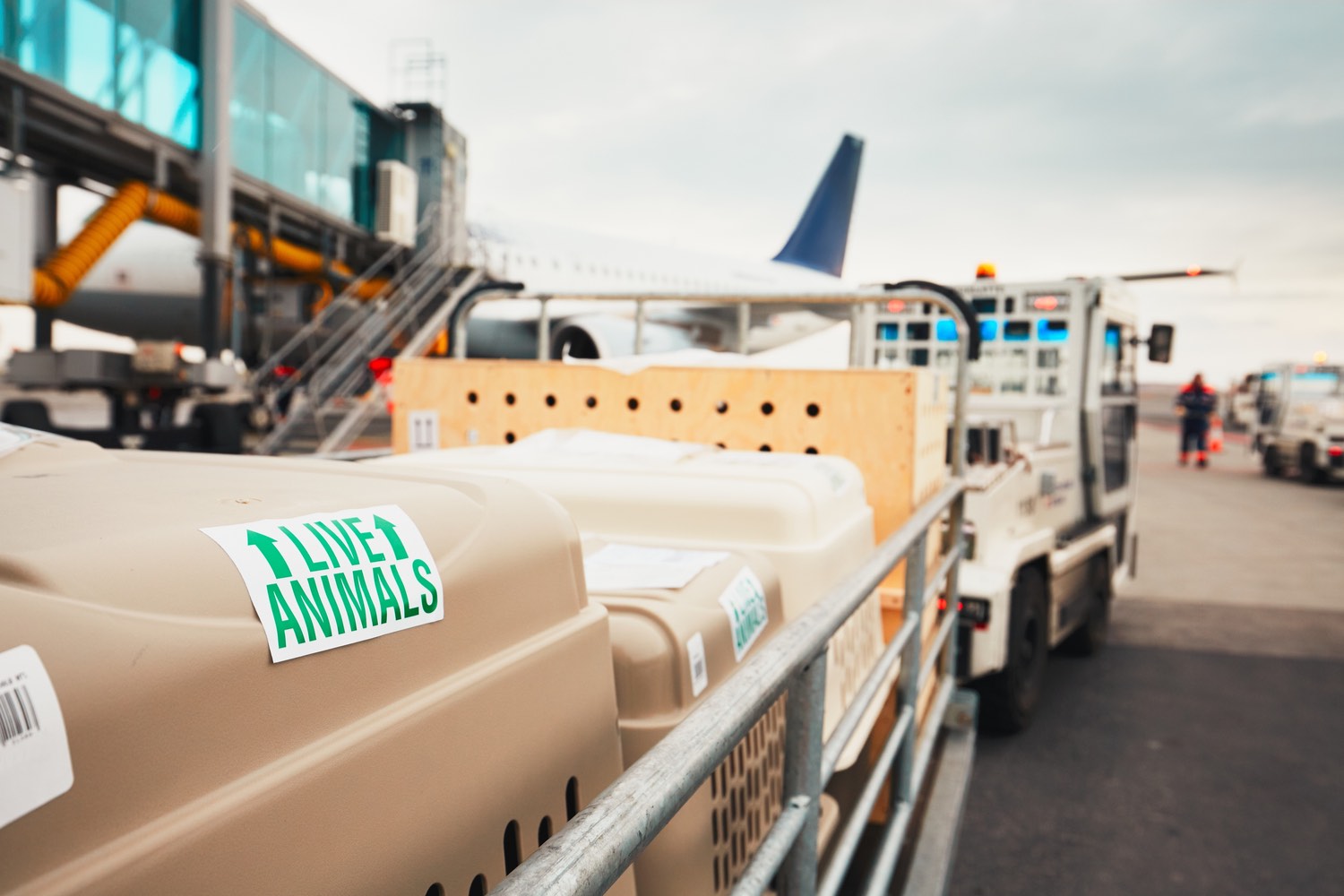
How to keep your pet safe on a plane
Flying with your furry friend? Here’s what you need to know to have a stress-free journey aboardIn collaboration with PetExportVet.
So you’ve packed your bags and ready to hit the blue skies? What if your pet is jet-setting with you? Whether you are moving abroad or booked in for an extended vacation, the idea of checking your furry friend in as a plane cargo can leave many feeling queasy. We asked Dr. Gerry Pahl, a veterinary surgeon and founder of PetExportVet, for advice on flying with your pet. Below, Dr. Gerry tackles some commonly asked questions about putting your pet in cargo hold.
How should I prepare my pet for the flight?
A very important consideration is “crate conditioning.” With your departure date in mind, we will normally get the travel crate to the owner well in advance so that they can start using training techniques. With dogs, we want to reduce their anxiety, so start by putting their favourite mat or rug in the crate, and keep the door open at all times. Feed your dog treats and even their meals in the crate so that they can associate being in the crate with positive experiences.
My dog will be anxious. Can they be sedated for the flight?
Research has shown that the risks of sedation far outweigh any potential benefits. Normal breathing and blood pressure is depressed and the animal has a reduced ability to regulate their body temperature. Using natural remedies, like essential oils and calming bites, can reduce anxiety.

Is my pet safe in travelling the aircraft cargo hold?
It is important to understand that not all aircraft are equipped to carry pets. Those aircraft that do have dedicated climate control systems in a special section of the cargo hold maintain a comfortable temperature and humidity.
Do I need to provide food and water during the flight? Should I feed my pet as normal before the journey? What about exercise?
It has been found that there is a reduced risk of intestinal problems and discomfort if pets travel on an empty stomach. If your flight is in the morning, they will be collected very early, so I advise that you don’t give them breakfast beforehand, and if your flight is in the evening, give them breakfast in the morning but nothing after midday. The travel crate will be fitted with a water bowl and absorbent bedding. It is also a good idea to take your dog out for exercise and toileting before collection and transport to the airport.

Are there any age or breed restrictions to consider before exporting my pet?
Generally there are no age restrictions, however, older dogs and cats can be prone to health issues which may need to be considered when preparing for air travel. In terms of breeds however, certain countries and airlines have restrictions on ‘fighting’ dog breeds. Another consideration is that many airlines are now banning particular ‘snub-nosed’ breeds. The risks of flying a snub-nosed dog is assumed to be higher due to breathing restrictions and many airlines aren’t prepared to take the risk.
Personally, I disagree with a total breed ban as the majority of individual animals within a breed are perfectly healthy and fit to fly. The key is identifying those pets that area at a higher risk due to airway obstruction or other related medical conditions. There isn’t enough research done in this area, but it’s certainly something to keep in mind if you are looking to move country.
Feature image courtesy of Unsplash.



